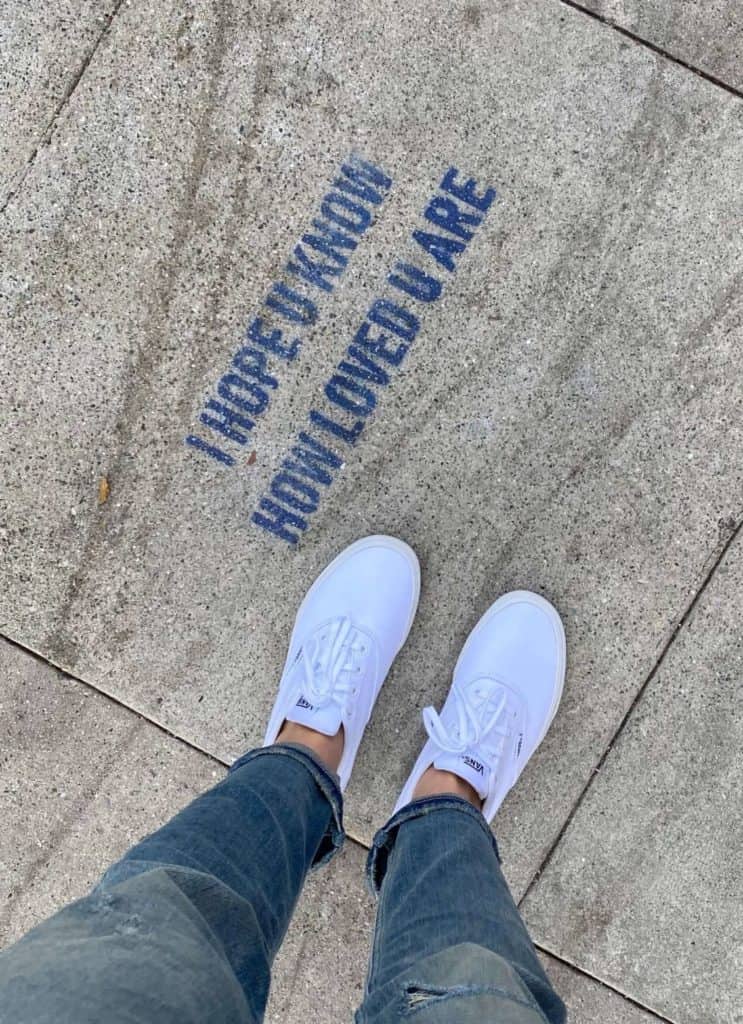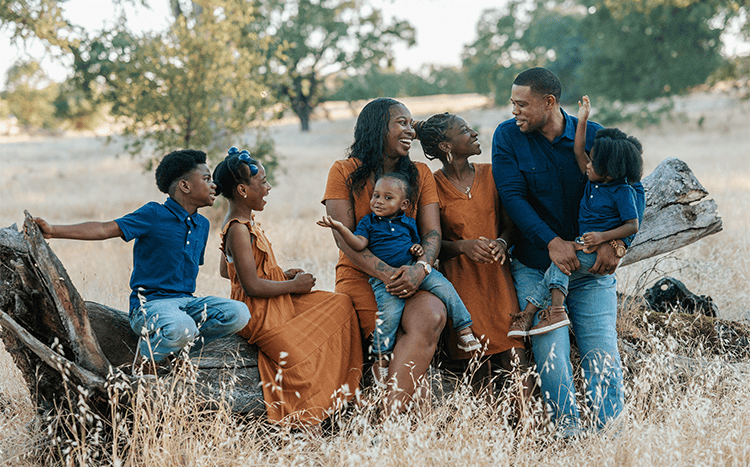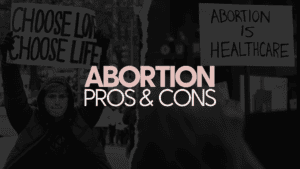The staff offered baked goods and fresh-squeezed lemonade at the clinic. Everyone did everything they could to make Destarra feel comfortable. It was hot outside, and the cool lemonade was refreshing. They tried to distract her from the pain and the bleeding.
Destarra was 15 at the time. She didn’t know what an abortion was— or understand what was happening to her. All she knew was that she was at track practice after school when she started feeling dizzy. Destarra attributed it to the California heat, so she finished stretching and started to run. She took one step and hit the ground.
Someone called her mother to say her daughter had fainted, and that afternoon a doctor delivered the news. Destarra wasn’t dizzy from the heat but from an early unwanted pregnancy.
“I was pregnant, carrying a baby,” she says. “[But] I was still a baby.”
Unwanted pregnancy and abortion
Destarra’s first thought wasn’t surprise or fear. It was anticipation. “In my head, I was excited,” she says, “and ready to tackle being a mommy at 15.”
The decision, however, was already made for her. Destarra was young, an athlete and her pregnancy was a potential embarrassment for her parents. She would have an abortion—end of story.
The clinic members, Destarra says, were friendly and welcoming. They smiled a lot and asked tons of questions. Apparently, she told them what they needed to hear. Destarra had no idea how far along she was. The workers told her she had a little blob of tissue that needed to be removed.
A tiny bean.
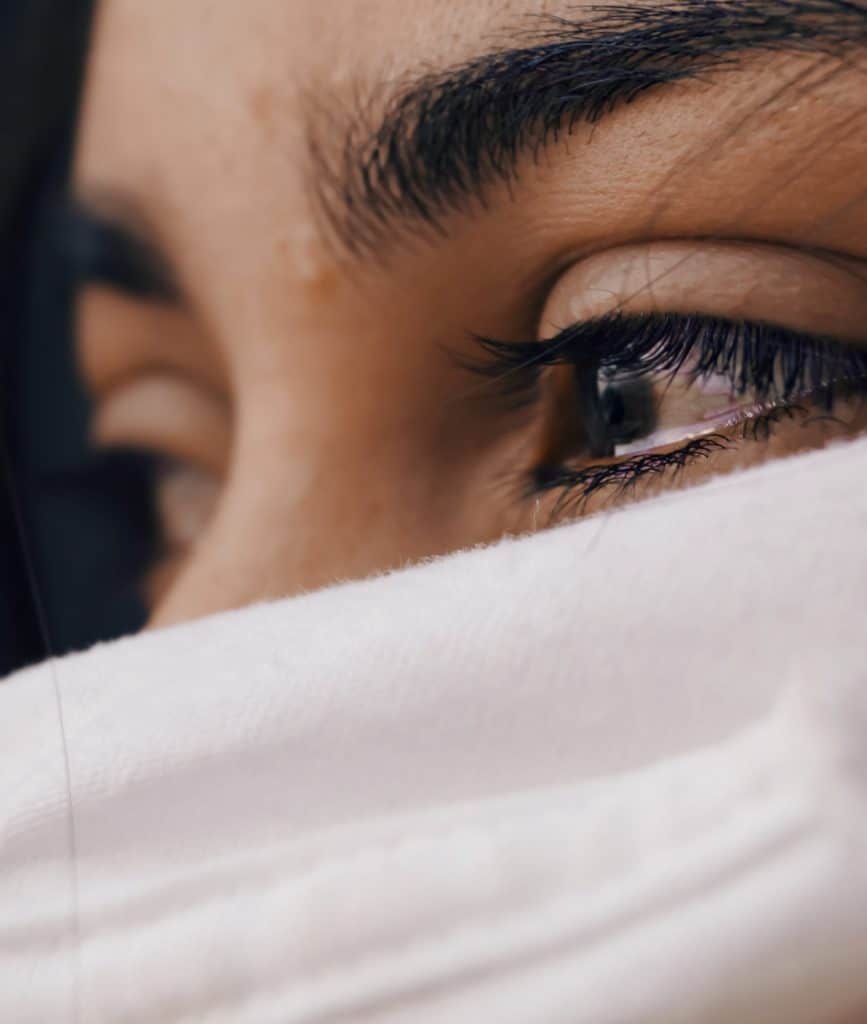
“They [said], ‘We’re just going to terminate the unwanted pregnancy.’ ”
Unsure what those words meant, Destarra replied, “OK.”
Her mom took her to the clinic and filled out the paperwork; Dad never really knew what was going on. A staff member escorted Destarra to the back of the clinic, to an examination room.
“Take off your clothes and put on this gown,” the clinic worker told her. Though Destarra didn’t recognize what was happening at the time, someone performed an ultrasound. Destarra never saw the monitor— and never asked to.
“We’ll remove the tissue and there will be some bleeding, but you’ll be fine,” someone else told her. “Then, in a week or so, you can go back to school and continue the activities you were doing before. Now, just start counting down from 30. . . .”
“I don’t know how far I made it,” Destarra says. “And when I woke up, I didn’t feel too good. I was throwing up.”
The nice clinic workers gave her lemonade and crackers, and her mother was waiting at the door. They spent the next few nights in a hotel room, Destarra says, speaking little of what had just happened. Two weeks later Destarra was still feeling sick and was still bleeding. She was told that her experience was normal, that her body was “working to get back on track.” And that was that. No one mentioned another word about her unwanted pregnancy. Nothing about sex ed or birth control or waiting for marriage. Nothing.
A cycle of unwanted pregnancies
At 19, Destarra was unexpectedly pregnant again. This time she understood what was happening. She remembered the place her mother had taken her and the workers who promised to keep her secrets. Completely confidential, they said.
By her third pregnancy, Destarra had the drill down pat. No matter the clinic, there were always saltines and smiles. “You made the right decision.” “We’ll help you.” “It’s just a blob of tissue and some mucus.” She’d heard it all before, stuck in a cycle she couldn’t escape.
Her best friend convinced Destarra to talk to the father of her child. It didn’t go well. He advised her to get an abortion. Destarra was hurt, but she made up her mind that it was something she should do because he didn’t agree with keeping the baby. He even gave her money for it. She cried afterward.
After her third abortion, Destarra learned she was pregnant again. She steeled herself for another clinic visit, but something was different this time. She felt angry and guilty though she didn’t know why.
Destarra decided to pass on the lemonade. She gave birth to a daughter and named her Khaliya.
The man upstairs
Destarra knew a little about Jesus. Her father told her about “the Man Upstairs,” and her family went to church most Sundays. In young Destarra’s mind, as long as she was in church on Sunday, she was fine for the rest of the week. But older Destarra wasn’t always fine. Yet she never forgot about the Man Upstairs.
“I started to know more about Jesus,” she says, “but I was still not told the truth about abortion, so I continued believing it wasn’t bad.”

Destarra says she had four abortions in all. She admits she has trouble recalling the particulars, but she will never forget what she saw during one
The unwanted pregnancy suprise
As the abortion got underway, the clinic worker neglected to turn the monitor away. On the screen she noticed something . . . moving.
“I saw this baby playing with his or her fingers,” she says, “and it scared me. It felt like my heart dropped to the floor.
“I began to question myself while lying on the table. What am I doing? How are they taking this baby out? What are they doing with the baby? I wanted to run out of that facility, knocking down any and everything I passed. Sadly, I stayed.”
The staffer noticed Destarra staring at the screen, and she turned the monitor around. Then she unplugged it.
Maybe I’m hallucinating, Destarra thought. Maybe I just saw something that wasn’t there. Maybe, but probably not. It was the first time she could tell for certain that her unwanted pregnancy was far more than a blob of tissue or a tiny bean.
The ultrasound changed everything
Destarra had never heard the term pro-life. She certainly didn’t know it was a movement. No one ever told her that every human being—mother or child, aged or preborn, with special needs or not—has dignity and is deserving of protection. She only knew that her abortions were in her past.
She was wrong.
It’s true that she would never again visit a clinic, never again eat the crackers and smell the disinfectant. But while her procedures were over, her dreams were just beginning. Destarra started having bad ones—horrible nightmares filled with wailing babies. She couldn’t stop thinking about what she’d seen on that clinic monitor.
She eventually got pregnant again and gave birth to another daughter and son. She kept having dreams, too, and not just about babies. One night she pictured herself in a small white church, a place that felt extremely familiar. The building seemed an awful lot like the one her family had attended when she was younger.
“I called my mother,” Destarra says, “and asked her if she remembered how to get to that little white church.”
Eventually, Destarra moved home and found that building. She found faith there. And she found Jesus.
When unwanted becomes wanted
In 2015 Destarra met the man who would become her husband. Patrick had regrets of his own, and the pair spent months just talking about God and life—two damaged people working to establish a healthy relationship.
They married in 2017, and a year later had their first child together, Patrick’s namesake. That’s when Destarra told her husband about the abortions. She thanked God that she was still able to give birth, and she rejoiced in being a mother again. Patrick could see how difficult it was for Destarra to revisit the past, so he mostly just listened and loved her.
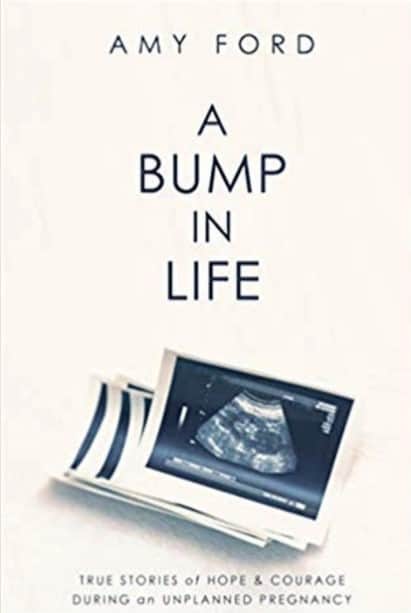
A Bump in Life
True stories of hope and courage during an unplanned pregnancy.
“I heard about the pro-life movement on Focus on the Family,” Destarra says. “When I first heard the discussions, I thought to myself, what does pro-life mean? Why are these people talking about abortion? I began to understand that the guests were sharing their testimonies to help others heal.”
Additional Reading:
An encounter with God's forgiveness
It was Patrick’s suggestion to attend the 2019 March for Life. Destarra learned about it on the Focus broadcast and had no idea that people even marched for life. Patrick and Destarra ended up bringing the whole family, piling everyone into a friend’s RV for the long drive to Washington, D.C.
Destarra says she lost count of how many people welcomed them at the march and thanked them for coming. She was having a great time—until she saw pictures of babies on the giant screens and heard an abortion survivor share her story.
Destarra listened until she couldn’t focus anymore or process what she was seeing and hearing. The story of this woman—an abortion survivor —awakened something deep inside Destarra, and the memories of her unwanted pregnancy snuck up on her until she unraveled on the streets of the nation’s capital. She wept like never before, her forehead on the ground. Every part of her hurt—mind, body and spirit.
“My kids couldn’t understand what was taking place, and neither could I. It was just me and God,” she says. “People surrounded me to help me, and a lady prayed for me and with me. I was sickened about my past abortions, but at that moment, I knew more was happening. I was having a real encounter with God. He forgave me.”
Hope for others with an unwanted pregnancy
She still weeps sometimes, but she adores being a mother. She and Patrick now have another son, and she has started working as a doula. One of her favorite parts of the job is being there when an ultrasound is performed. For Destarra, it’s always a thrill as parents get to hear their baby’s heartbeat— the music of life—for themselves.
Destarra no longer minds the sound of babies crying. Nowadays it’s a soothing sound, she says, because she is there to catch their tears, to hold the babies and help them. She wants others, particularly young mothers, to hear about her story, to learn from her experience and find the same radio program that changed her life.
“If I’d had this teaching when I was a young woman,” she says, “there would have been a different outcome.” •
